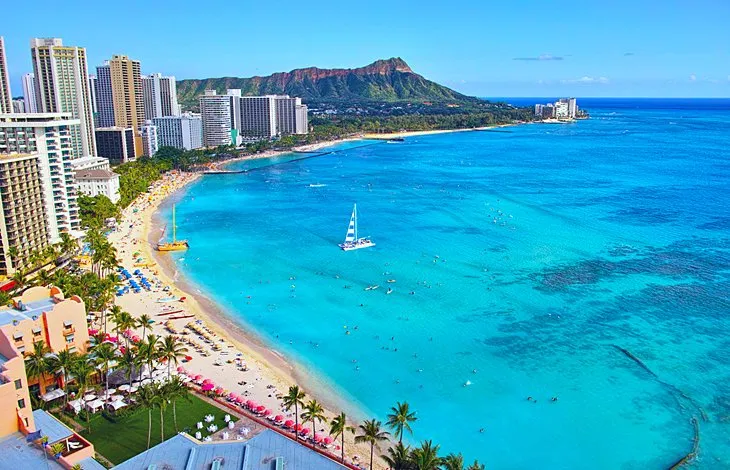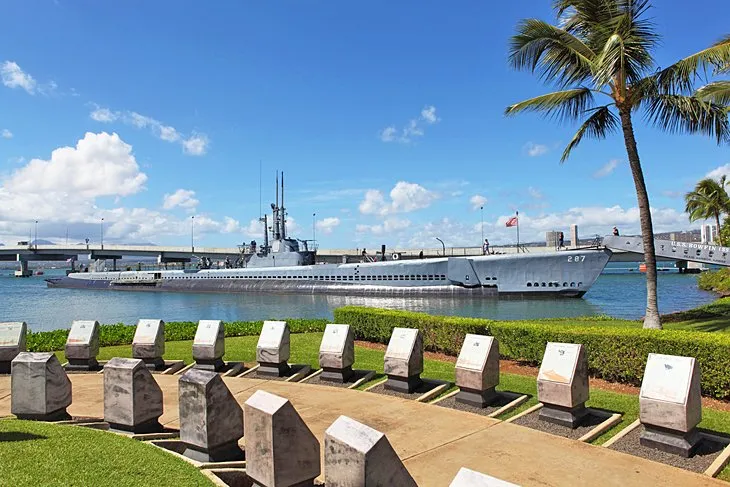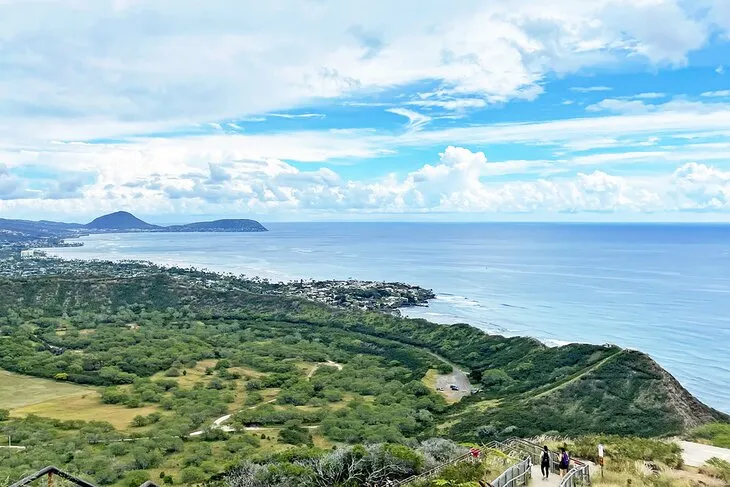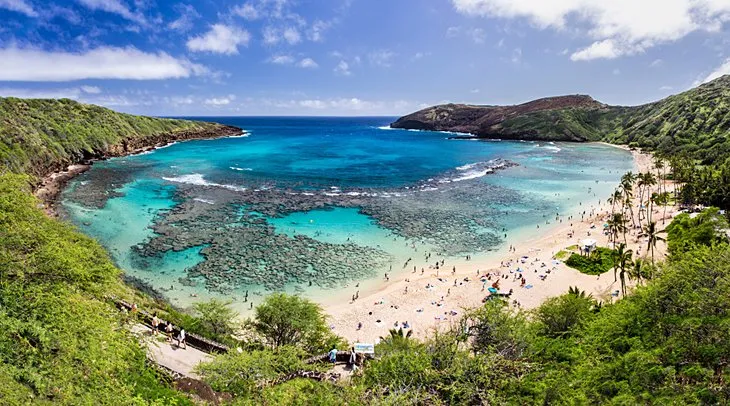Welcome to the vibrant heart of Hawaii! Honolulu is often the first taste of island paradise for many visitors, a bustling cosmopolitan city effortlessly blended with breathtaking natural beauty and profound historical depth. As a hub of culture, history, adventure, and incredible cuisine, Honolulu offers a myriad of experiences for every type of traveler. Planning your trip means unlocking unforgettable moments, and diving into the diverse attractions ensures your time is well spent. Let’s explore the best places for Sightseeing Honolulu and truly connect with the spirit of Aloha.
Hawaii itself is a destination rich in history, culture, and stunning landscapes. Honolulu, located on the island of Oahu, serves as a gateway to these wonders while offering its own unique blend of urban energy and relaxed island vibes. Whether you’re drawn to sun-kissed beaches, poignant historical sites, challenging hikes, or delicious local flavors, sightseeing Honolulu provides an immersive experience that goes far beyond the typical tourist trail. Get ready to uncover the stories, tastes, and sights that make this city so special.
Exploring Waikiki: More Than Just Beaches
Waikiki is undoubtedly the most famous district in Honolulu, and for good reason. Centered around Kalakaua and Kuhio Avenues, this area buzzes with energy, offering a concentration of hotels, restaurants, and shops right alongside its iconic shoreline. While its beaches are legendary, the Waikiki experience is multifaceted, blending relaxation with vibrant urban life and a deep connection to surf history.
Beyond the sand, Waikiki offers fantastic shopping opportunities. The Royal Hawaiian Center and International Market Place are must-visits, providing not just retail therapy but also dining options and often hosting free cultural performances like live music and traditional hula shows. These spots capture the lively atmosphere that defines Waikiki.
Waikiki is also the birthplace of modern surfing, championed by Duke Kahanamoku. A statue honoring him stands proudly, and the Waikiki Historic Trail, marked by surfboards, tells the story of the area’s surfing heritage. Learning to surf here is not just a fun activity, but a way to connect with local history and sport culture.
 Panoramic view of Waikiki Beach, a must-do for sightseeing Honolulu visitors.
Panoramic view of Waikiki Beach, a must-do for sightseeing Honolulu visitors.
Historical Insights While Sightseeing Honolulu
Honolulu holds significant historical weight, particularly concerning the events of World War II. Pearl Harbor stands as a powerful and moving reminder of a pivotal moment in history. Visiting the Pearl Harbor Visitor Center allows you to learn about the 1941 attack through exhibits and historical context before taking a boat tour to the solemn USS Arizona Memorial, which rests above the sunken remains of the battleship.
Pearl Harbor is home to other historical sites like the USS Bowfin submarine museum, offering insight into submarine life during WWII, and the USS Missouri Battleship, famously known as the site of Japan’s surrender. These locations provide a profound historical perspective, making them essential stops for those interested in history while sightseeing Honolulu. Remember that reservations are often required for popular sites like the USS Arizona Memorial.
Beyond military history, Honolulu was also the center of the Hawaiian Kingdom. Iolani Palace, the only royal palace in the United States, has been meticulously restored, allowing visitors to step back in time and learn about the lives of the Hawaiian monarchy. Touring the palace offers a glimpse into the island’s political history and the events leading to the overthrow of the kingdom, adding a crucial layer to understanding Hawaiian culture.
 The solemn USS Arizona Memorial floats above the sunken battleship at Pearl Harbor.
The solemn USS Arizona Memorial floats above the sunken battleship at Pearl Harbor.
The Hawaiian Mission Houses Museum offers another perspective on the island’s past, showcasing the oldest Western-style buildings still standing in Hawaii. These restored homes provide insights into the lives of early missionaries and their impact on the islands, including the development of a written Hawaiian language.
Embracing Nature: Outdoor Sightseeing Honolulu
Honolulu’s urban landscape is beautifully framed by dramatic natural features. Diamond Head State Monument, the iconic volcanic crater overlooking Waikiki, is a popular destination for hikers. The trail to the summit, though steep in parts, rewards climbers with breathtaking panoramic views of the coastline and city below. It’s a challenging yet highly recommended activity for active travelers.
 Stunning panoramic view of Waikiki coastline from the summit of Diamond Head.
Stunning panoramic view of Waikiki coastline from the summit of Diamond Head.
Another natural wonder is Hanauma Bay Nature Preserve, a protected marine ecosystem within a volcanic crater. Renowned for its calm, clear waters and abundant marine life, it’s a premier spot for snorkeling and diving. Visiting requires reservations and watching an educational video to help protect the fragile reef, highlighting the importance of sustainable tourism. Exploring the vibrant underwater world here is an unforgettable natural experience.
For those seeking jungle adventures, the trails near Honolulu don’t disappoint. The Manoa Falls Trail leads through lush rainforest, reminiscent of a scene from Jurassic Park, culminating in a beautiful 100-foot waterfall. The Koko Crater Railway Trail offers a different kind of challenge – climbing over 1,000 steps made from old railway ties for stunning views from the top of the crater. These hikes allow you to easily access raw nature just minutes from the city.
 Snorkelers exploring the vibrant coral reef at Hanauma Bay Nature Preserve.
Snorkelers exploring the vibrant coral reef at Hanauma Bay Nature Preserve.
Culinary Adventures: Taste of Honolulu
Exploring a city’s food scene is a vital part of understanding its culture and history, and Honolulu’s culinary landscape is a delicious reflection of its diverse influences. Hawaiian cuisine is a fusion of indigenous traditions and the flavors brought by immigrants from Asia, Europe, and the Pacific Islands. Eating local food is truly a form of sightseeing Honolulu through your taste buds.
Beyond the famous luau experience, you can discover local favorites like the plate lunch, a hearty meal typically consisting of an entree (like katsu chicken or kalua pig), two scoops of rice, and macaroni salad. Poke bowls, featuring fresh, raw fish seasoned in various ways, are a ubiquitous and essential part of the local diet. Seeking out the best poke spots is a culinary quest in itself.
Don’t miss trying iconic local treats. Malasadas from Leonard’s Bakery are legendary – warm, fluffy Portuguese doughnuts rolled in sugar. Shave ice, a finely shaved ice dessert often flavored with tropical syrups and sometimes topped with ice cream or condensed milk, is the perfect way to cool down on a warm day. Visiting local eateries and markets allows you to interact with residents and sample authentic flavors.
 Enjoying colorful shave ice, a refreshing treat while sightseeing Honolulu.
Enjoying colorful shave ice, a refreshing treat while sightseeing Honolulu.
Cultural Gems and Local Experiences
Honolulu is a melting pot of cultures, and its museums and centers offer fantastic opportunities to delve deeper. The Polynesian Cultural Center, while located outside downtown Honolulu, provides an immersive look into the distinct cultures of various Polynesian islands through interactive exhibits and performances. It’s a comprehensive way to appreciate the shared heritage of the Pacific.
The Bishop Museum is Hawaii’s state museum and houses extensive collections of Polynesian arts and artifacts, natural history specimens, and items reflecting the diverse immigrant groups who settled in Hawaii. Its exhibits offer valuable context for understanding the islands’ unique ecological and cultural history. The J. Watumull Planetarium within the museum adds an educational layer about the Hawaiian night sky.
 Entrance to the Bishop Museum, Hawaii’s state museum of natural and cultural history.
Entrance to the Bishop Museum, Hawaii’s state museum of natural and cultural history.
The Honolulu Museum of Art boasts a significant collection, with a particular strength in Asian art, reflecting Hawaii’s historical ties to the region. It also features Hawaiian and European/American art, showcasing the blend of influences that have shaped the city’s artistic landscape. Shangri La, the former home of Doris Duke, is another unique cultural stop, showcasing a stunning collection of Islamic art.
For a taste of local life, visiting places like the KCC Farmer’s Market on a Saturday morning offers a chance to sample local produce, baked goods, and artisanal products alongside residents. It’s a vibrant, sensory experience that connects you directly to the island’s agricultural bounty and community spirit.
Navigating and Planning Your Visit
When planning your sightseeing Honolulu itinerary, consider clustering attractions by location (Waikiki/Diamond Head, Pearl Harbor, Downtown) to minimize travel time. Renting a car offers flexibility, but Honolulu also has public transportation options and ride-sharing services. Popular spots like Diamond Head and Pearl Harbor often require advance reservations, so book online well before your trip, especially during peak season.
What to Eat in Fort Worth – A Culinary Deep Dive
Discover the Top Restaurants in Denver – A Culinary Journey
Discover Where to Visit in Las Vegas
The best time to visit for ideal weather is generally spring or fall, avoiding the wetter winter months and the peak summer crowds. However, Honolulu’s tropical climate means pleasant temperatures year-round. Packing essentials include reef-safe sunscreen, comfortable footwear for walking and hiking, swimwear, and light clothing. Staying hydrated, especially when hiking, is crucial.
Frequently Asked Questions about Sightseeing Honolulu
- What is the most famous attraction in Honolulu?
While Waikiki Beach is arguably the most famous area, the USS Arizona Memorial at Pearl Harbor is the most visited single attraction. Diamond Head is also an incredibly iconic natural landmark. - How many days do I need for sightseeing Honolulu?
To experience the major attractions and get a feel for the city, a minimum of 3-5 days is recommended. This allows time for historical sites, beaches, a hike, some cultural exploration, and enjoying the food scene without feeling rushed. - Is Honolulu walkable?
Waikiki is very walkable, with shops, restaurants, and the beach easily accessible on foot. However, to reach attractions outside Waikiki like Pearl Harbor, Downtown, or hiking trails, you’ll need transportation (car, bus, ride-share). - Do I need reservations for popular attractions?
Yes, for highly popular spots like the USS Arizona Memorial and Diamond Head State Monument, booking reservations online well in advance is strongly recommended, as visitor numbers are often limited. - What kind of food should I try in Honolulu?
Definitely try a plate lunch, poke, shave ice, malasadas, and fresh seafood. Explore local markets and eateries to sample authentic flavors and local specialties.
Conclusion
Sightseeing Honolulu offers a rich tapestry of experiences, weaving together stunning natural landscapes, poignant historical sites, vibrant cultural expressions, exciting outdoor activities, and a uniquely delicious culinary scene. From the iconic shores of Waikiki and the solemn reflections at Pearl Harbor to the challenging hikes up volcanic craters and the flavorful exploration of local cuisine, Honolulu invites you to immerse yourself. Plan your visit, embrace the Aloha spirit, and discover the many layers that make this city a truly unforgettable destination.
